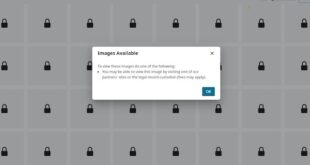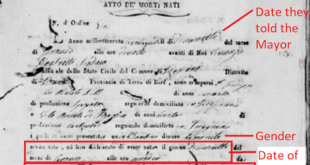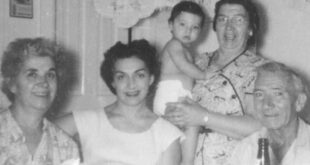Let’s pretend we’re at a trivia contest and the next question is, “What’s the word for someone who has an interest in cemeteries?” You could answer “cemetery enthusiast” or “grave hunter” but those would be wrong because the question asks for a single word. It turns out that the word is “taphophile” pronounced “TAF-oh-file.”
The moniker has a Greek root, “taphos,” which is a catch-all word for anything to do with funerals, burials, etc.
It can be part of the ritual of the death of a loved one to attend a wake, drive in procession to a church and then to the cemetery, watch the casket lowered into the ground, and then a gather for lunch at a nearby restaurant. Many people opt for none of these, or they choose to mourn privately. Everyone has their own form of closure, derived from their religious faith or lack thereof. Some of the final rites for a loved one are determined by the costs of a wake and a casket and vault and the digging of a grave. Some people who are ill tell their families that they don’t want a wake or funeral. Many people opt to be cremated and have their ashes, aka “cremains,” scatter some place so they don’t take up space, or to become one with nature or whatever.
As genealogists, we have to explore those and all other options to get closure for each person in our family tree. We know the person passed away, but we need to mark the final resting place in our tree, even if that place is ‘no idea”
If you were close to someone, you would probably know all the details. You might have been the person who made the arrangements. Or you simply attended the wake and funeral and burial. My mother saved all the Mass cards from the wakes. But if you could not attend, or you didn’t find out about the death until well after the final services had taken place, where is the best place to find the final resting place?
Sadly, there is no one web site that contains everyone. But a great place to start is www.findagrave.com. Findagrave started in 1995 as a place to only show where famous people were buried, and then they allowed us to add photos. The idea was that we could look for the famous people when we visited that cemetery to visit our loved ones. Then, it made it easy for people to visit on-line without having to fly to Hollywood or New York. Finally they allowed us to add anyone at all. 238 million memorials later, findagrave has millions of contributor members, all free. We contribute. We search. They take donations for upkeep of the website.
Each person has a memorial record number, and the full name, dates and places of birth and death (not always complete or accurate), final resting place, and plot/crypt/niche details if available. They also allow us to type up a biography, which most often is the obit, but it could be longer and more detailed.
You can also link a memorial to the memorials of their parents, spouses and children, which is a great way of finding out not only about old Uncle Frank but his kids who have been entered in Findagrave too.
One major area of Findagrave is the photo request system. When you are in a memorial, but you are not able to get a photo of the marker, you can click “Request Photo.” This is designed for people who live too far away from the grave and want to “visit” without driving or flying to the grave site. When a request is clicked, people who live within a few miles of that cemetery are notified by e-mail that a request has been sent for a grave close to where they live, and many people then drive to the nearby cemetery and take photos of the marker and then they click “fulfilled request.” Then Findagrave notifies the requester that the photo is now on the site. This is such a great way to get photos posted for relatives and friends who died a long way away. There is no guarantee that a request will be filled. I have three people in a cemetery in southern Cook County, which is not in a great neighborhood, and 10 years later, nobody has stopped by to grab a photo for me! Another issue with photo requests is that often, people do not list the plot/crypt/niche location in the memorial, so the photographer has to go to the office and ask them for the location. This is a pain, especially if they have 30 requests in the same cemetery. The cemetery offices typically are not happy about photographers asking for so many locations and walking around taking pictures. At least if the plot location is on findagrave, the photographer doesn’t have to ask the office, which may lead to a better chance for them to get the photo without interference. There are some cemeteries that have specifically posted signs that “You are not authorized to take photographs of anything in this cemetery. Violators will be banned from entering these cemetery grounds.” Very threatening, but not really enforceable.
Please keep in mind a number of facets of Findagrave. One is that not everyone is in this web site. If no one enters a memorial, there won’t be one. This is a pure volunteer effort. Two, you might find duplicate memorials. Findagrave tried to ask the memorial contributors to merge their duplicates together, and they try to ask that the person who was closest to the deceased to be the manager of the memorial. Three, there may be a memorial even for someone with no known final resting place. Sometimes the cemetery name is “cremated – family is in possession of the ashes” etc.
Four, if you see a piece of data missing or inaccurate in the memorial, you can suggest a change. The memorial manager must approve the change or reject it. If you are the person who created the memorial, you can change what you want without “suggesting.” If anyone suggests a change to one of your memorials, you should reply through the website to accept or reject the change, and findagrave puts the change on the memorial for you.
Five, the manager of a memorial may have also passed away. It is not always the top priority of the next of kin to contact findagrave but sometimes they do. Findagrave tried to move the management of these memorials to someone willing to take over, and then we can send more suggestions.
Six, if someone died recently, findagrave won’t show any details too soon. They bring up a page that says that “to be sensitive to family members, we show limited information for three months.” They also want a close family member to take over management of that memorial, so some jerk doesn’t take it and put junk data in it.
As with every public set of genealogy data, such as family trees on Ancestry and FamilySearch, Findagrave has the problem that the data may be not always accurate. The birth date may be incomplete, the birth town may be wrong. When the data comes from the public, there is no expert to arbitrate whether the data is correct or not. As I say in many-a-column, take the data with a grain of salt, and check it out for yourself, if you can. If you are not sure about any data on the memorial, you can send a message via Findagrave to the manager of that memorial to ask if they know the source of the info, or to tell them you have found something different. This could put you in contact with someone who can help you with more info on that family. It could just as easily be a taphophile who just adds memorials but has nothing to do with the person in the memorial. Not everyone who posts in Findagrave is a genealogy researcher. And not everyone reads all their messages. But you might be lucky enough to find a researcher who can help with info on that family!
 Fra Noi Embrace Your Inner Italian
Fra Noi Embrace Your Inner Italian








Sono italiana e i miei nonni provengono entrambi da Stoccareddo piccolo paese dell altopiano di asiago Vi. Mi sono appassionata alla genealogia ed ho ricostruito il mio albero genealogico. Ho scoperto l’esistenza di antenati che sono emigrati nel Michigan Illinois Wisconsin Colorado ..e che hanno lavorato nelle miniere. Ho utilizzato find a grave per trovare la tomba di uno di loro e ho avuto fortuna! Ho trovato una signora volontaria che ha trovato pulito e fotografato la tomba di un mio prozio morto nel 1914. Ringrazio i curatori del sito perché m han permesso di localizzare le tombe di altri parenti in Australia. Consiglio questo sito e ringrazio FRA NOI che mi tiene aggiornata sulle iniziative della comunità italiana in Chicago . Ho scoperto il sito FRA NOI perché proprio in quella zona sono emigrati molti miei parenti tutti di cognome Bau’ . Grazie e un abbraccio.
(The following translation courtesy of Google translate.)
I am Italian and my grandparents both come from Stoccareddo, a small town on the Asiago Vi plateau. I became passionate about genealogy and reconstructed my family tree. I discovered the existence of ancestors who emigrated to Michigan Illinois Wisconsin Colorado…and who worked in the mines. I used find a grave to find the grave of one of them and I got lucky! I found a volunteer lady who cleaned and photographed the grave of a great uncle of mine who died in 1914. I thank the curators of the site because they allowed me to locate the graves of other relatives in Australia. I recommend this site and I thank FRA NOI for keeping me updated on the initiatives of the Italian community in Chicago. I discovered the FRA NOI website because many of my relatives, all with the surname Bau’, emigrated to that area. Thanks and a hug.